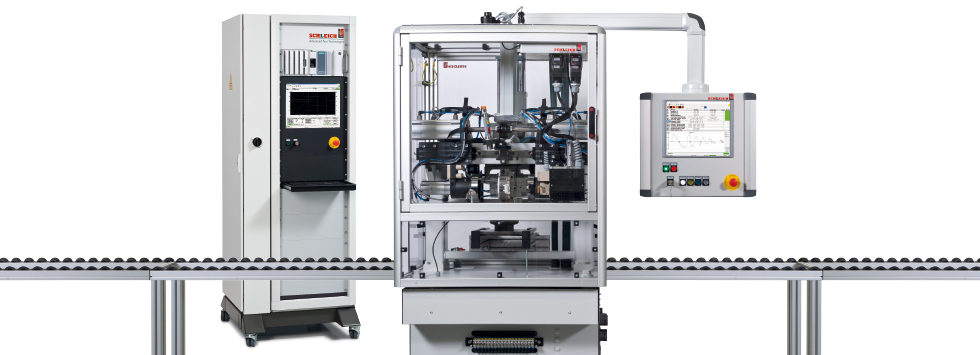Do I feel safe?
Am I doing everything right?
You will know for sure in a few minutes.
Safety tests are mandatory and are part of every final inspection of your electrical product.
Learn the most important facts about the medical leakage current test.
We explain the WHY?, WHERE? and HOW?
And if you would like to learn more, you can download even more detailed information at the end of this page free of charge!
As is the case with “classic” leakage current testing, the focus of medical leakage current testing is on the quality and safety of the insulation. Furthermore, special attention is also paid to the occurrence of various faults.
The Risk

A malfunction or insulation weakness of the medical device inevitably leads to the highest possible endangerment of the patient.
Dangerous currents must therefore never flow at the patient connections. This danger must be ruled out with a test. The medical leakage current test is therefore not only performed in the protective earth conductor or on the housing, but also on all patient connections. This results in a large number of possible malfunctions.
It is therefore not only a matter of conventional insulation weaknesses of the electrical conductors, but essentially of possible electrical malfunctions of the medical device under as many conceivable fault conditions as possible.
In order to detect malfunctions, a wide variety of possible – and even seemingly impossible – malfunctions are simulated during normal device operation, e.g.:
What happens at the patient connections when …?
- … the printer connection of the medical device is connected to mains voltage?
- … a sudden break occurs in the medical device between the power supply and the application side?
- … unused patient connections accidentally come into contact with ground or mains voltage?
- … the mains supply is partially or fully interrupted?
- … etc.
Under no circumstances may currents be allowed to flow at and between the patient connections in the event of malfunctions, which could endanger the patient during a medical checkup or operation.
The DIN EN 60990
All possible faults are described in detail in this standard. Studying the standard, the manufacturer of the medical device will notice the complexities and the very extensive requirements for the tests to be performed.
To avoid any faults when creating the test plan for your test device, SCHLEICH offers a software assistant tool for the GLP2 device class. This simplifies the creation test plans considerably.
Based on various inputs, it reliably and quickly generates the complete test sequence.
But what about the other safety tests?
SCHLEICH test devices are designed to combine all safety and all functional tests in a single test device.
Your advantage: connect all test leads including the patient connections, connections of the application side and the functional ground to the test device – the test sequence with often hundreds of test steps then runs fully automatically.
All set? Want more details?
Our mission – know-how, know-how, know-how… Those who understand the test methods with technical and normative certainty will get the most out of their test device.
– Dipl. Ing. Martin Lahrmann
Yes – tell me more. I want maximum security for our customers, our company and myself.
Send me more detailed information from the SCHLEICH test method handbook.








